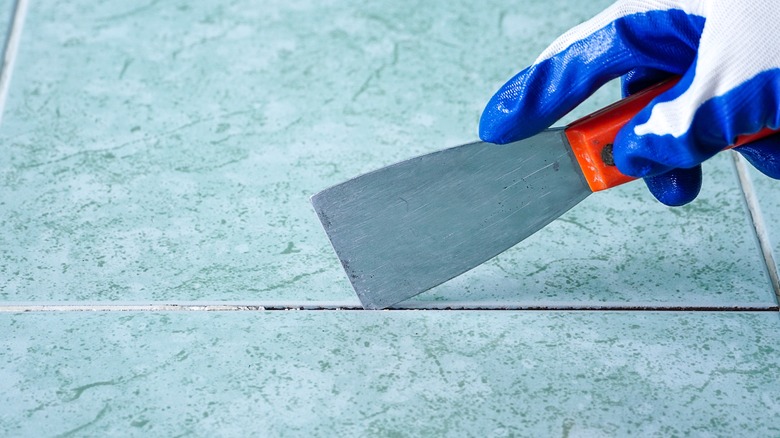3 Defrosting Techniques You Should Never Use On Your Car's Windshield
Here's a relatable situation – you leave your house on the morning of a frosty winter day, you walk over to your car to get to work, only to find that your windshield is completely covered with thick, visually-obscuring frost. Obviously, you can't drive with that stuff on there (at least not safely) so you're going to have to get into some good old-fashioned defrosting. It's a major pain, but since it's such a common concern, the matter has been reduced to simple science.
There are plenty of great ways to defrost a car's windshield, from specialized chemical mixtures to sturdy scraping tools. However, much like any automotive pursuit, in addition to all the ways you can safely defrost a windshield, there are several ways that you should absolutely never use. These particular methods are especially tricky because they seem like they would be really effective, but in actuality, using them runs a very high risk of severely damaging your vehicle.
Pouring hot water
As far as obvious ways to get rid of ice go, one of your first inclinations was probably to put the kettle on, right? It sounds incredibly obvious — boil up a big pot of water and dump it all over the windshield. It's all just water, so it couldn't possibly hurt your car, right? Wrong.
Here's a little lesson on the concept of temperature. Flexible objects, when exposed to high heat or intense cold, will expand or contract, respectively. The atoms in the object lose their kinetic energy and huddle together — that's why water freezes. However, if you introduce a sudden jolt of an opposing temperature, you'll induce thermal shock, a disconnect between local temperatures.
What this means is that, if you were to pour boiling water over a freezing windshield, the ice might melt, but the sudden jolt of opposing temperatures will cause a rapid expansion of the windshield's body, which could cause it to crack.
Using a metal tool
Commercial-grade ice scrapers owned by most drivers are all made of plastic, and there's a very good reason for that. Plastic tools are firm, yet dull, so they can have force exerted upon them without directly piercing whatever you're using them on. Of course, because of this relative weakness, some ice scrapers may seem a bit ineffectual on your car's windshield. You may be tempted, then, to use something a little sturdier, but this isn't a good idea.
Metal tools are stronger than plastic ones, yes, but as far as windshields are concerned, they're much too strong. A metal scraper with a sharpened edge will dig right past the ice and strike at the windshield itself. If you use that thing to scrape ice, you're going to scrape the windshield as well, resulting in a huge, unseemly scratch on the windshield's surface. That's the whole reason we use plastic tools for this because using a tool that's stronger than its target will break it.
Using a hairdryer
You've probably considered using a hairdryer as a defrosting tool around the house before, maybe to loosen up something that's been stuck in the freezer for a while. By that logic, it makes some degree of sense to try and use one to loosen up ice and frost on your car's windshield. But do you know why they call it a "hairdryer?" Because it's only meant to be used on your hair, and definitely not on your car.
There are three very good reasons you shouldn't use a hair dryer on your car. The first is our old friend, thermal shock. If you attempt to heat a car's windshield with a hair dryer, the heat won't flow evenly, meaning you'll have a windshield that's half-hot-half-cold. When two parts of a whole have opposing temperatures, you're asking for a thermal shock-induced crack.
The other two reasons are more practical. Hairdryers are only designed to put out a very specific amount of heat, even on high, so attempting to defrost a windshield with one is probably going to take an annoyingly long time, assuming the windshield doesn't crack immediately. Finally, do you have an outlet in your garage you can plug a hairdryer into? Is the cord even long enough? Maybe your hairdryer is battery-powered, but that still doesn't solve the other concerns.



